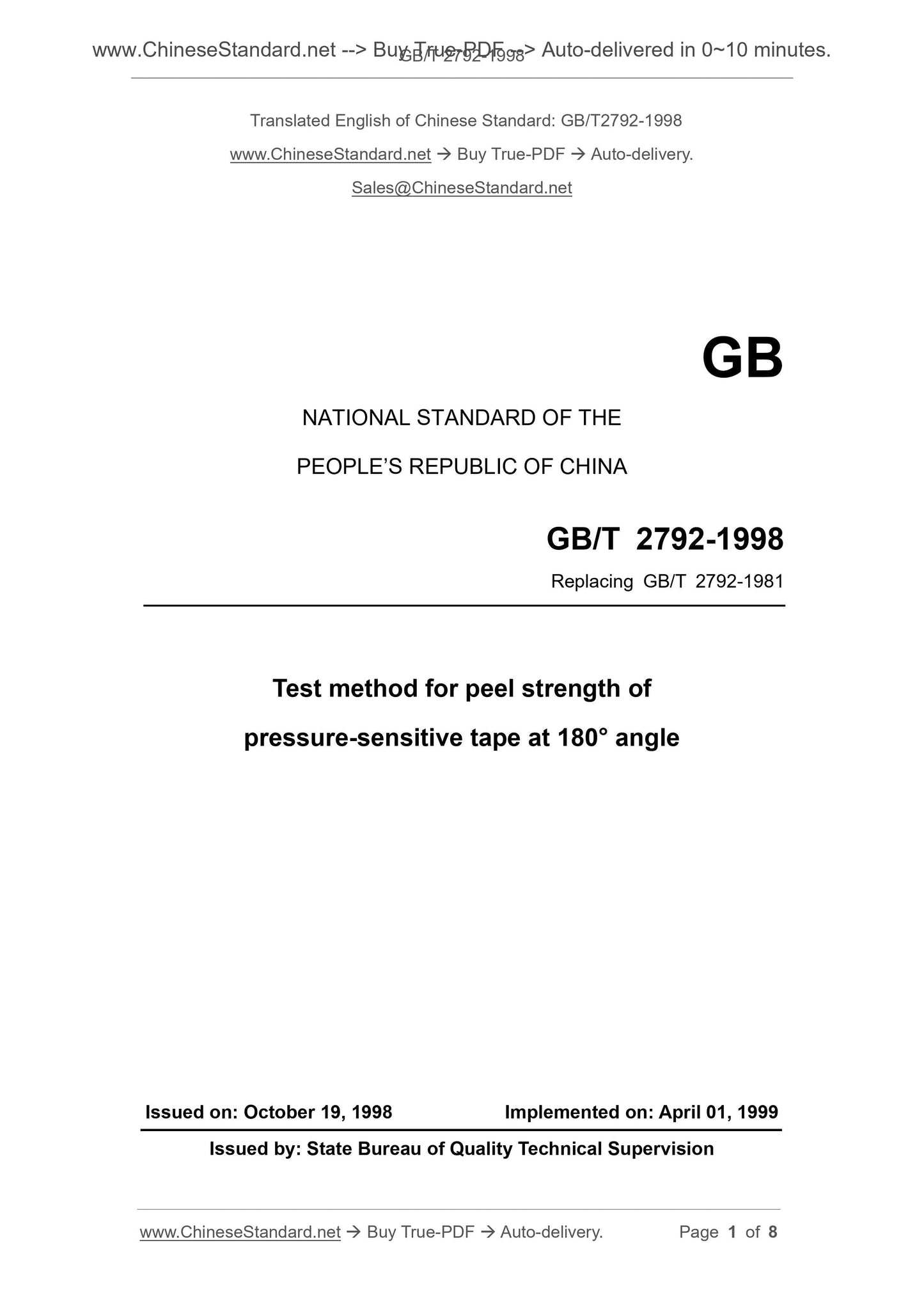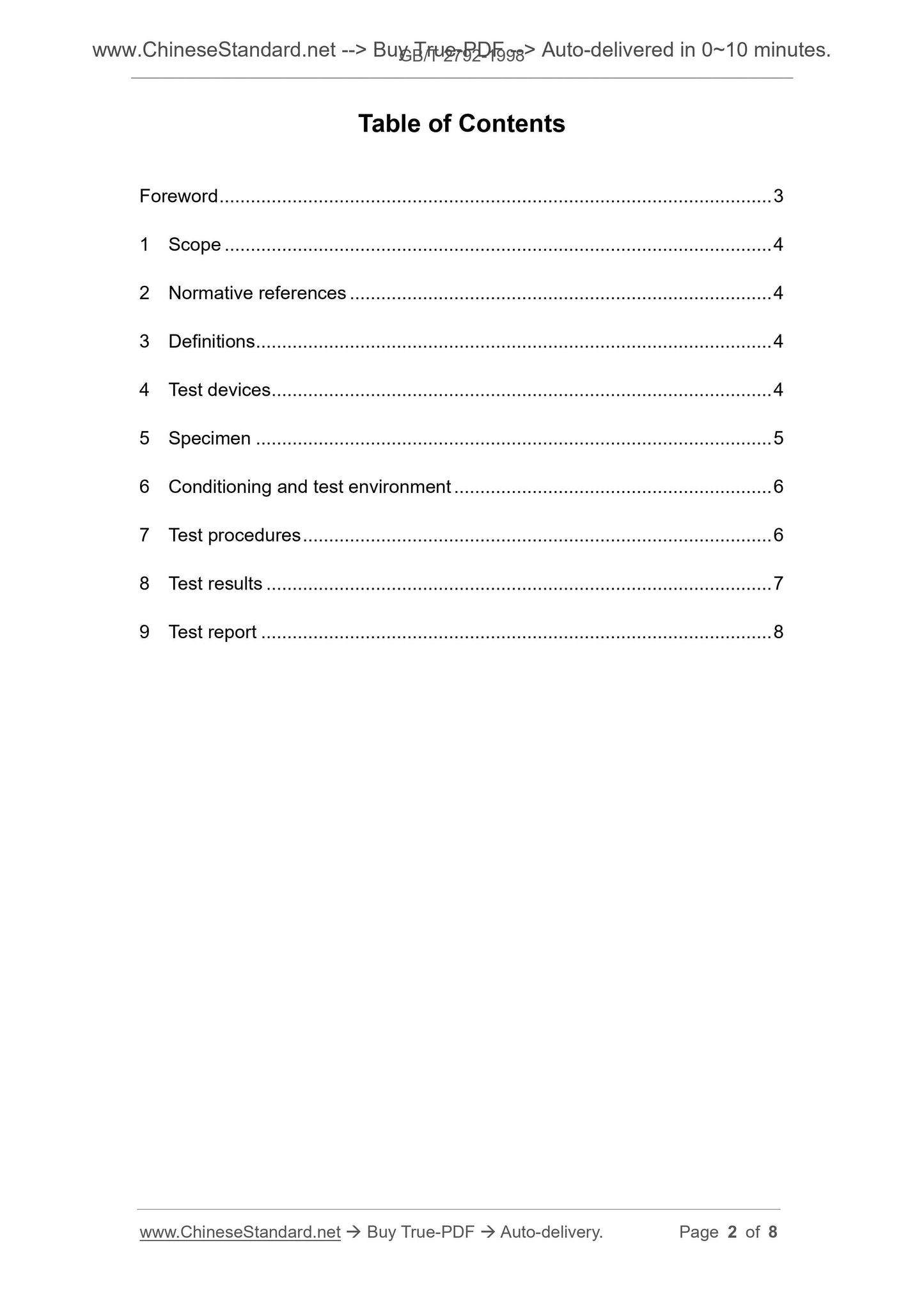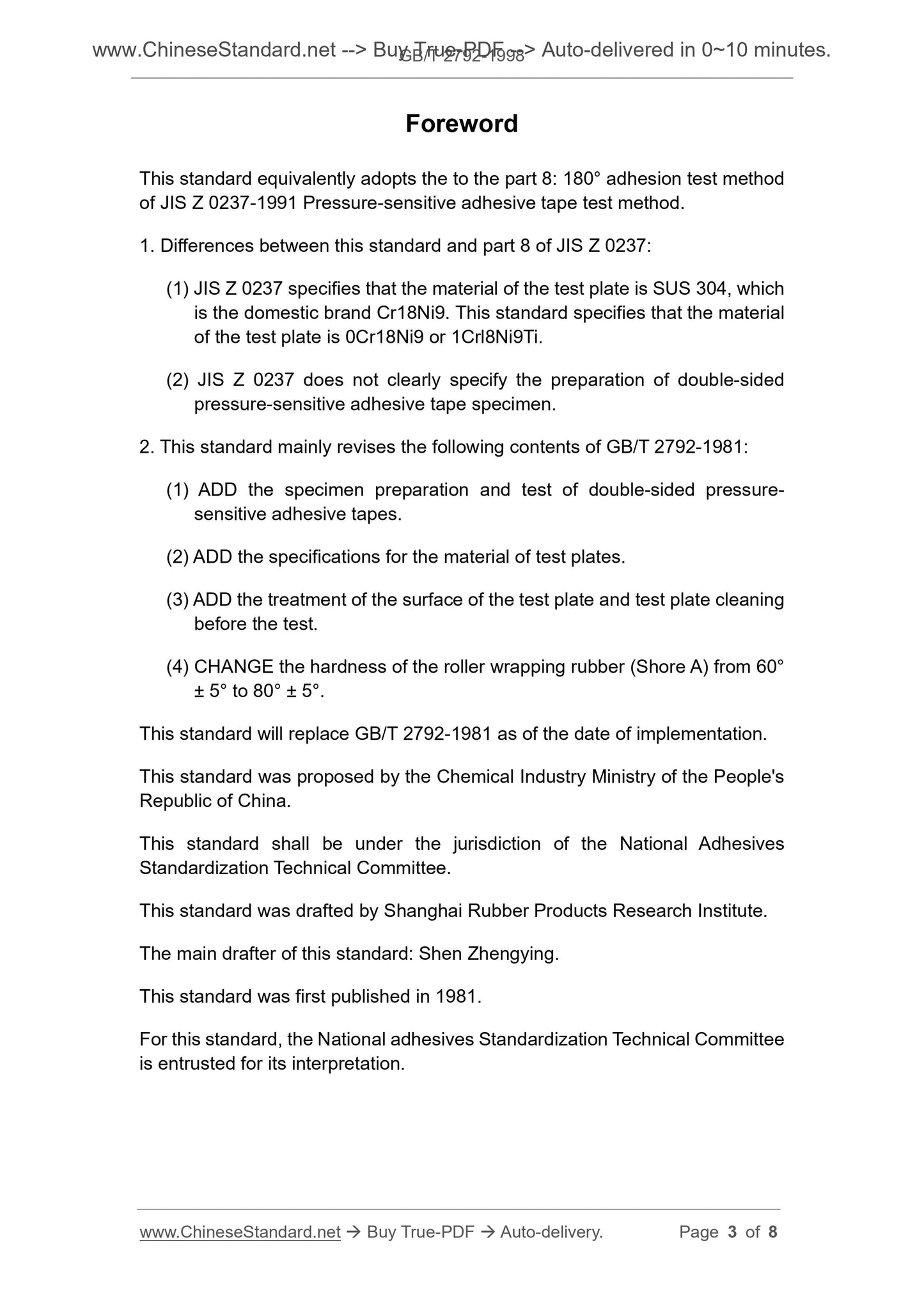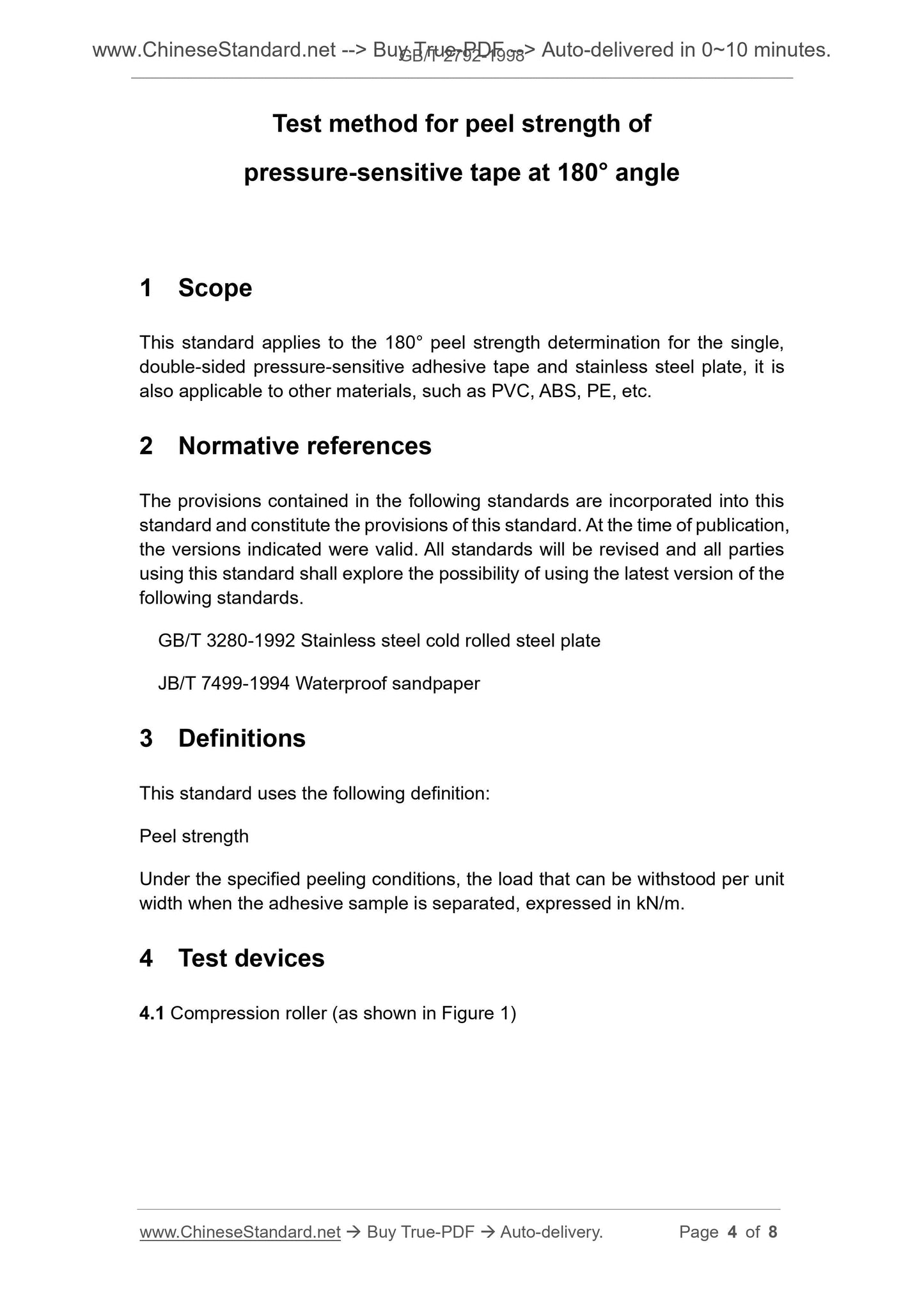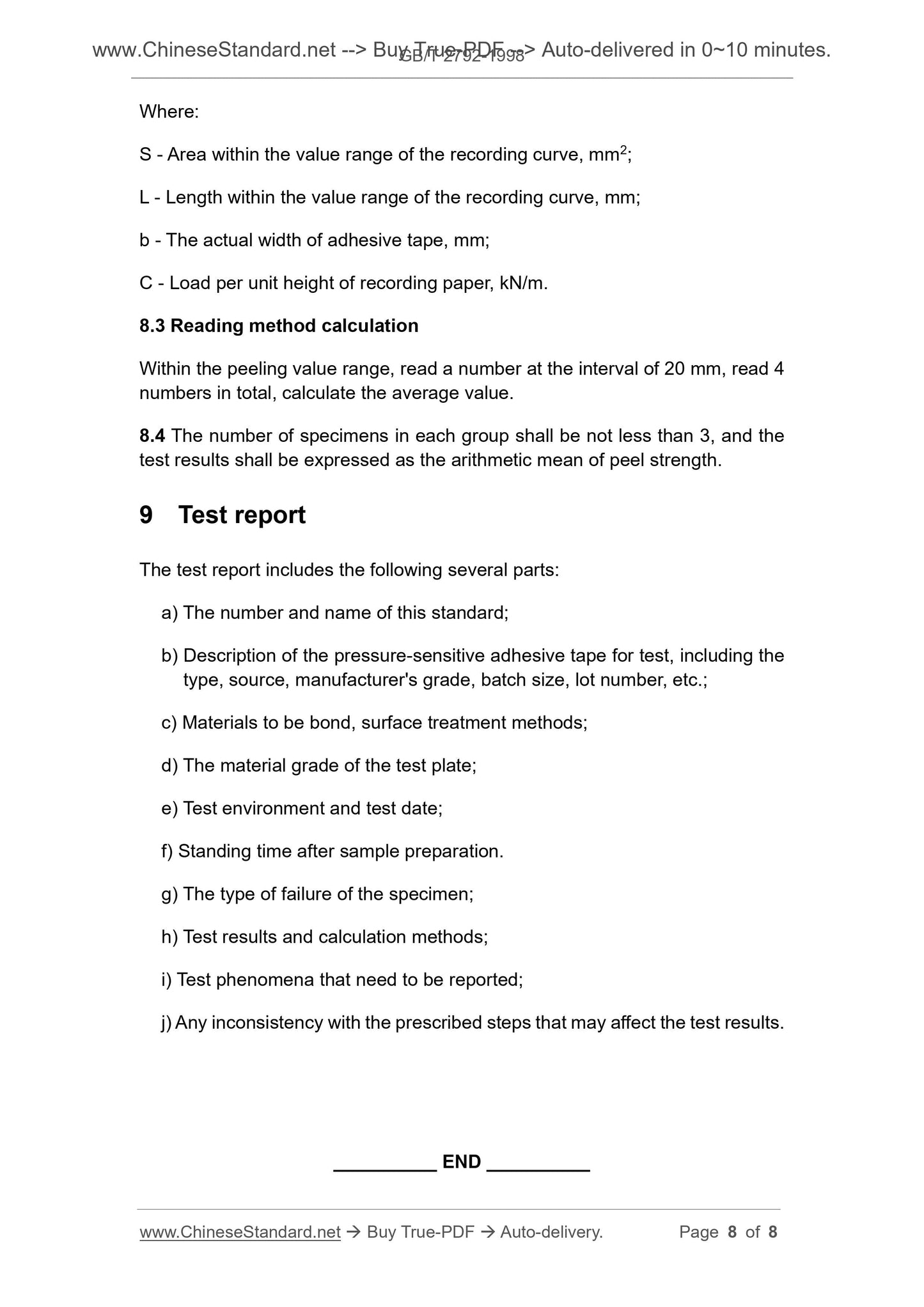1
/
of
5
PayPal, credit cards. Download editable-PDF and invoice in 1 second!
GB/T 2792-1998 English PDF (GB/T2792-1998)
GB/T 2792-1998 English PDF (GB/T2792-1998)
Regular price
$70.00
Regular price
Sale price
$70.00
Unit price
/
per
Shipping calculated at checkout.
Couldn't load pickup availability
GB/T 2792-1998: Test method for peel strength of pressure-sensitive tape at 180 Degree angle
Delivery: 9 seconds. Download (and Email) true-PDF + Invoice.Get Quotation: Click GB/T 2792-1998 (Self-service in 1-minute)
Newer / historical versions: GB/T 2792-1998
Preview True-PDF
Scope
This standard applies to the 180° peel strength determination for the single,double-sided pressure-sensitive adhesive tape and stainless steel plate, it is
also applicable to other materials, such as PVC, ABS, PE, etc.
Basic Data
| Standard ID | GB/T 2792-1998 (GB/T2792-1998) |
| Description (Translated English) | Test method for peel strength of pressure-sensitive tape at 180 Degree angle |
| Sector / Industry | National Standard (Recommended) |
| Classification of Chinese Standard | G38 |
| Classification of International Standard | 83.18 |
| Word Count Estimation | 5,557 |
| Date of Issue | 10/19/1998 |
| Date of Implementation | 4/1/1999 |
| Older Standard (superseded by this standard) | GB/T 2792-1981 |
| Adopted Standard | JIS Z0237-1991, MOD |
| Issuing agency(ies) | State Quality and Technical Supervision |
| Summary | This standard applies to single, double-sided pressure sensitive adhesive tape was measured with stainless steel 180 �� peel strength, but also for other materials, such as PVC, ABS, PE, etc. |
Share
